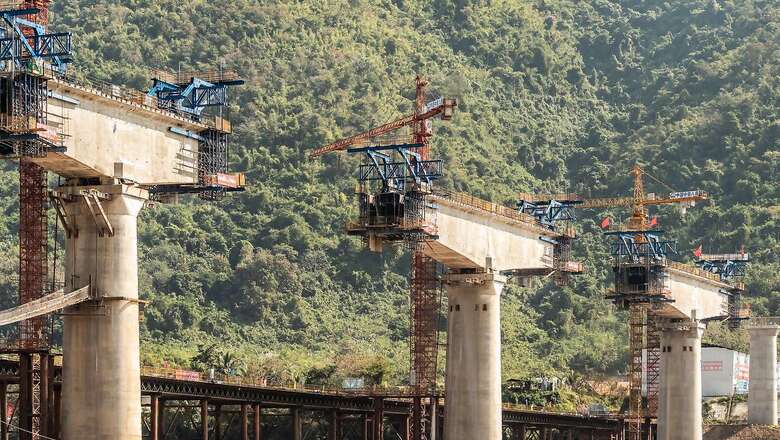
views
The visuals from Sri Lanka are still fresh. An economic crisis which led to violent protests and ultimately to the resignation of Prime Minister Mahinda Rajapaksa grabbed the attention of the world. Covid-19, the war in Ukraine and a mounting debt burden had all proven to be last straws for the South Asian country.
Sri Lanka, it seems, was first among many nations facing imminent threat of complete economic unwinding. Laos, for one, is saddled with threats to its economy – which is on the verge of defaulting.
Laos is a Communist state, and public dissent is unwelcome.
Yet, the people of this Southeast Asian country are increasingly getting angry and frustrated with the state of affairs. Oil shortages have begun hitting Laos, and long queues at petroleum stations are now a common sight.
Apart from its debt crisis, Laos’s currency – the Kip has begun nosediving. Separately, inflation is soaring. Essentially, an economic storm promises to turn Laos upside down.
This time last year the Lao kip was trading at about 9,430 per US dollar. Now, the purchase of one US dollar requires around 15,000 kip – a depreciation of over 40 per cent. This depreciation has been exacerbated by the United States hiking its interest rates. Inflation numbers for Laos pose a scary picture for the country.
In January, inflation was recorded at 6.25% year on year. In February, the figure rose to 7.3%, and the next month, it reached 8.5%. In April, inflation soared to 9.9%, and latest estimates peg it at 13%.
The biggest concern for Laos continues to be its mounting public debt. Last year, public debt reached $14.5 billion, with about half of the amount owed to China alone. According to the World Bank, this figure represents 88% of Laos’ gross domestic product (GDP). According to Nikkei Asia, Laos also owes 11% of its debt to China from bilateral loans. The World Bank says Laos’ foreign debt is estimated at $1.3 billion, to settle annually till 2025.
Earlier this month, Moody’s Investors Service warned that Laos is on the “brink of default,” while downgrading the country’s credit rating to Caa3.
Laos has chosen to remain aloof from global trade. Trade with the West is negligible, and Laos’ only meaningful trade partners are China, Thailand and Vietnam. China has debt-trapped Laos while pretending to be its friend. In 2020, for example, Laos ceded majority control of its electric grid to a Chinese company. Total Chinese investment in Laos’ power, transport, a border economic zone and other projects already totals over $16 billion.
The regime in Laos is for the first time perhaps facing some severe questions about how the country has landed in this situation and what is being done to fix it. To somehow salvage its reputation, the Lao People’s Revolutionary Party (LPRP) has reorganised its government’s cabinet. Two new deputy prime ministers have been added, while the heads of the national bank and the Ministry of Industry and Commerce have been replaced.
Prime Minister Phankham Viphavanh has pretty late into the game shifted his government’s entire focus towards somehow saving Laos from an economic crisis. At the moment, though, Laos’ problems seem insurmountable, with people bracing for impact.
Read all the Latest News , Breaking News , watch Top Videos and Live TV here.



















Comments
0 comment